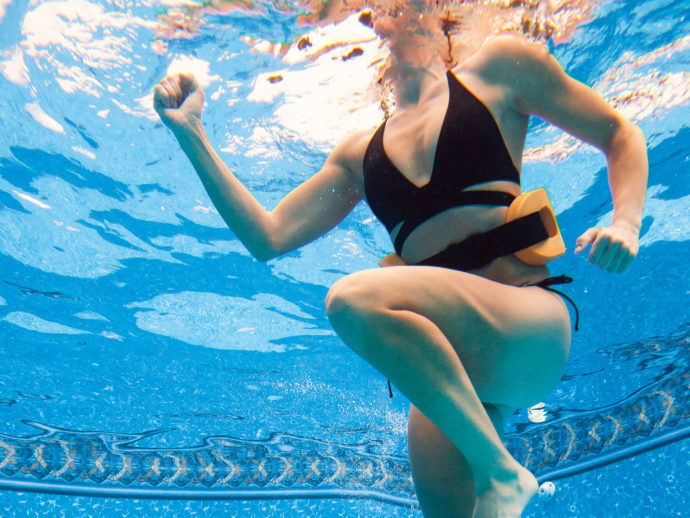Low-impact fitness for everyone
Is deep water running (DWR) for you? If you’re looking for cross training ideas, nursing an injury or even just searching for a great low-impact workout, exercising in the water is perfect. Dive in!
What is it?
Deep water running is running performed in water deep enough to cover the shoulders and keep the feet off the bottom of the pool. Some people prefer to run in place by tethering themselves to the side of the pool, while others choose to travel up and down a lane.
To maintain proper form and to ease apprehension, a flotation device, like a flotation belt, is highly recommended. It’s not uncommon to overuse the upper body when a flotation aide isn’t worn.
Benefits of the water
Buoyancy and drag make running in water a challenging workout without the repetitive stress that running on land brings. This makes DWR an excellent form of cross-training, maintaining our fitness while giving our muscles and joints a break from the usual loads we place upon them.
Taking time off our regular weight-bearing activities also goes a long way toward preventing injury.
Picking a style
There are two popular techniques used when running in deep water. The high-knee style resembles stair climbing or marching in place, while the cross-country version is similar to a fast run on a treadmill or on land.
Typically, the cross-country version is preferred, but it is important to consult a qualified instructor for more information on which style and technique would work best for you. If you’re new to exercise, it’s best to check with your health care practitioner.
Preferred technique
- slight forward lean, as if running up a small incline
- arms swinging from the shoulders, just like running on land
- knee lifting toward the surface of the water (60 to 80 degrees at the hip)
- sole of foot perpendicular to the bottom of the pool (90 degree angle at the ankle) when knee is raised
- leg extending toward bottom of pool, keeping knee slightly bent and foot lightly pointed as you reach for the bottom of the pool
Sample workout
Keep in mind that you may feel like you’re exerting more effort with DWR, but your heart rate will likely remain lower than with land running.
This “pyramid run” is an example of a DWR workout.
- 10 minutes easy pace
- 1 minute hard, followed by 1 minute easy
- 2 minutes hard, 2 minutes easy
- 3 minutes hard, 3 minutes easy
- 4 minutes hard, 4 minutes easy
- 5 minutes hard, 5 minutes easy
- 4 minutes hard, 4 minutes easy
- 3 minutes hard, 3 minutes easy
- 2 minutes hard, 2 minutes easy
- 1 minute hard, 1 minute easy
- 10 minutes easy

